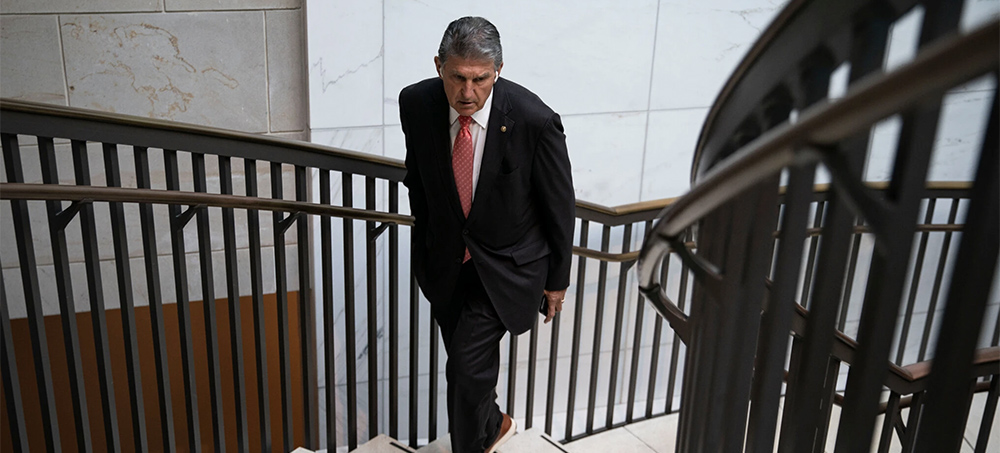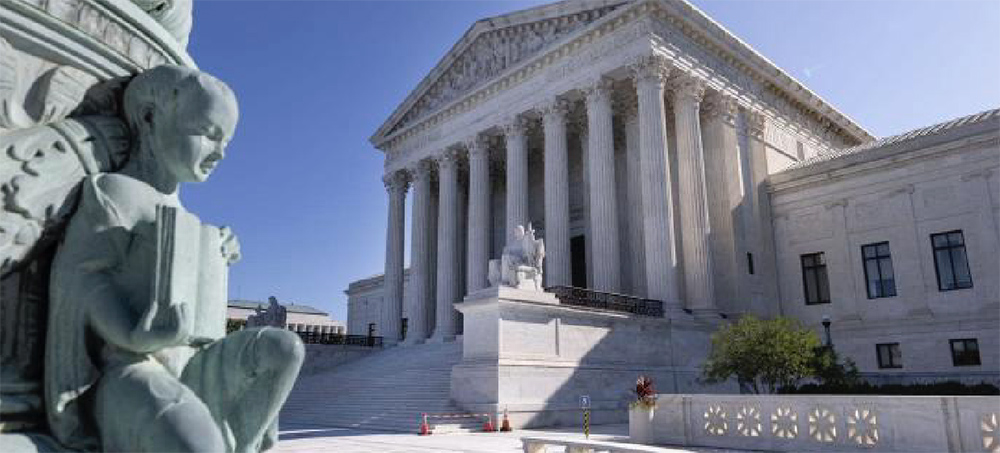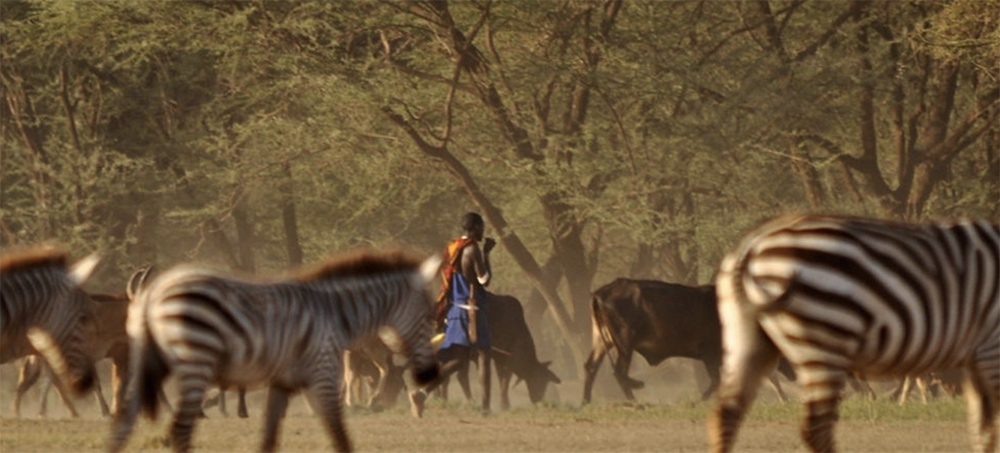Live on the homepage now!
Reader Supported News
That includes, according to the New York Times, Americans helping the United Arab Emirates hack Americans.
The documents detail a conspiracy by the three men to furnish the Emirates with advanced technology and to assist Emirati intelligence operatives in breaches aimed at damaging the perceived enemies of the small but powerful Persian Gulf nation. The men helped the Emirates, a close American ally, gain unauthorized access to “acquire data from computers, electronic devices and servers around the world, including on computers and servers in the United States,” prosecutors said. The three men worked for DarkMatter, a company that is effectively an arm of the Emirati government. They are part of a trend of former American intelligence officers accepting lucrative jobs from foreign governments hoping to bolster their abilities to mount cyber-operations.
Oooh, “DarkMatter”! Did they all have to wear capes? Costumes? Are they part of the MCU yet? In any case, I’m not sure I want governments like those in the UAE mounting cyber-operations. Their good faith even in this episode is forever…ahem…suspect.
DarkMatter had its origins in another company, an American firm called CyberPoint that originally won contracts from the Emirates to help protect the country from computer attacks. CyberPoint obtained approval from the American government to work for the Emiratis, a necessary step intended to regulate the export of military and intelligence services. Many of the company’s employees had worked on highly classified projects for the N.S.A. and other American intelligence agencies.
But the Emiratis had larger ambitions and repeatedly pressed CyberPoint employees to exceed the boundaries of the company’s American license, according to former employees. CyberPoint rebuffed requests by Emirati intelligence operatives to try to crack encryption codes and to hack websites housed on American servers — operations that would have run afoul of American law. So in 2015 the Emiratis founded DarkMatter — forming a company not bound by U.S. law — and lured numerous American employees of CyberPoint to join, including the three defendants.
It’s not just three renegade spooks-for-hire, either. The universe of covert surveillance and cyber-monitoring is both wide and profitable. For example, on Tuesday, Apple announced that it had fixed a security flaw in many of its devices that apparently rendered them vulnerable to hacking, and which reportedly was used extensively by the notorious Israeli cyber-for-hire hacking concern the NSO Group. From CBS News:
Researchers at the University of Toronto's Citizen Lab said the security issue was exploited to plant spyware on a Saudi activist's iPhone. They said they had high confidence that the world's most infamous hacker-for-hire firm, Israel's NSO Group, was behind that attack…Citizen Lab previously found evidence of zero-click exploits being used to hack into the phones of al-Jazeera journalists and other targets, but hasn't previously seen the malicious code itself. Although security experts say that average iPhone, iPad and Mac user generally need not worry — such attacks tend to be limited to specific targets — the discovery still alarmed security professionals.
Apparently, I’m not alone in my concerns. This has been a years-long investigation and, in addition, far from the spotlight, policymakers have been trying to update the laws and regulations regarding how much of their expertise former American intelligence operatives can peddle to foreign countries, which will use that expertise to, oh, let’s just say, ratfck any attempts to reform their oil-sodden repression. This cannot be a space that is beyond the law.
There is also the reality that American laws have been slow to adapt to the technological changes that have provided lucrative work for former spies once trained to conduct offensive cyberoperations against America’s adversaries.
Specifically, the rules that govern what American intelligence and military personnel can and cannot provide to foreign governments were devised for 20th-century warfare — for instance, training foreign armies on American military tactics or selling defense equipment like guns or missiles. They have not addressed the hacking skills honed in some of America’s most advanced intelligence units and sold to the highest bidder.
That former members of what is laughingly called the American intelligence “community” have been helping these parasitic oligarchical petro-states is bad enough. But I’d also like to know why these purported “allies” are using them to facilitate, as the Times put it, “DarkMatter’s hacking and targeting of American citizens.” It’s time to slap some seriously onerous regulations on this for a while.
 Senator Joe Manchin, Democrat of West Virginia, represents a state that is second in coal and seventh in natural gas production, and personally profits from stock he owns in his family's coal brokerage. (photo: Al Drago/NYT)
Senator Joe Manchin, Democrat of West Virginia, represents a state that is second in coal and seventh in natural gas production, and personally profits from stock he owns in his family's coal brokerage. (photo: Al Drago/NYT)
Senator Joe Manchin is already a crucial swing vote in the Democrats’ sweeping budget bill. But he will also write the details of its climate change program.
Mr. Manchin has already emerged as the crucial up-or-down vote in a sharply divided Senate when it comes to Mr. Biden’s push to pass a $3.5 trillion budget bill that could reshape the nation’s social welfare network. But Mr. Biden also wants the bill to include an aggressive climate policy that would compel utilities to stop burning fossil fuels and switch to wind, solar or nuclear energy, sources that do not emit the greenhouse gases that are heating the planet.
As chairman of the Senate Committee on Energy and Natural Resources, Mr. Manchin holds the pen and the gavel of the congressional panel, with the authority to shape Mr. Biden’s ambitions.
 Greg Abbott. (photo: LM Otero/AP)
Greg Abbott. (photo: LM Otero/AP)
Abbott's approval rating has dropped to 45 percent in the aftermath of controversial legislation such as a ban on mask mandates amid the COVID-19 pandemic and a ban on most abortions after six weeks. It's far too early to tell how things will play out in next year's election, but two well-known potential candidates look like they could give Abbott a serious run if they do wind up entering the race.
Actor Matthew McConaughey, who has hinted that he's entertaining the idea (though it's unclear what party, if any, he would represent), led Abbott by nine points in a hypothetical matchup in the new poll, while former Rep. Beto O'Rourke (D-Tex.), who ran against Sen. Ted Cruz (R-Tex.) for a spot in the upper chamber and later took a shot at the Democratic presidential nomination, cut a previous 12-point head-to-head deficit against Abbott down to five in the survey. Abbott does have a more comfortable lead against Republican primary challengers, however.
 The Supreme Court of the United States. (photo: Kevin Dietsch/Getty Images)
The Supreme Court of the United States. (photo: Kevin Dietsch/Getty Images)
Earlier this month, the newest justice gave a speech lamenting how the Court is viewed as partisan and warning that her fellow justices must be "hyper vigilant to make sure they're not letting personal biases creep into their decisions." She must know something we don't.
These remarks may seem like a surprise. After all, Barrett was confirmed to the Court in a hyper-partisan process and gave the aforementioned speech at an event celebrating Sen. Minority Leader Mitch McConnell, the architect of the judicial system's rightward turn. Despite the hypocrisy, or perhaps because of it, the comments struck a chord.
In an age of Republicans challenging legitimate election results because they lose or might lose, the credibility of the Court is the next hammer to fall in our democracy, the last bastion of hope for nonpartisan decision making.
But now the Court is rightfully losing public support as the veneer of impartiality slips, and the hyper-partisanship both at and around the Court is to blame.
Partisan justice
Even as recently as a few years ago, the Supreme Court wasn't as partisan as it is now. Support certainly started eroding when McConnell and Senate Republicans refused to seat President Obama's final nominee, current Attorney General Merrick Garland.
But there have been recent decisions that were, for lack of a better term, bipartisan. Justice Gorsuch joined four liberal justices to support Native American land claims in Oklahoma. In a 7-2 opinion, the Supreme Court kept the Affordable Care Act intact.
As recently as a few months ago, Justices Kavanaugh and Roberts helped keep the eviction moratorium in place in a 5-4 ruling (though this was overturned a few months later in a separate case). Roberts, the Chief Justice who many believe is trying to keep the court as nonpartisan as possible, has often found himself siding with the liberal justices.
But, on issues important to many Americans, this facade of bipartisanship seems to be disappearing. First, the Supreme Court threw out the eviction moratorium they had so recently upheld, throwing millions of struggling Americans into uncertainty.
Then the death knell came a few weeks ago, when the Supreme Court blatantly signaled a willingness to overturn Roe vs. Wade by allowing a strict Texas anti-abortion law to go into effect. Though Roberts voted with the liberals in this decision, the other Republican-appointed justices essentially overturned nearly 50 years of legal precedent.
Given the 6-3 Republican majority, it's safe to assume we will see more decisions like this in the coming years. Though Roberts can play nonpartisan as much as he wants, the conservatives have a five-justice majority even without him and can rule on cases as they wish.
Votes, not words
The Republican strategy over many decades to focus on the court has paid off. They have turned to the court to legitimize gerrymandering and gut the Voting Rights Act, and justices like Barrett and Roberts have supported them.
Both of those justices are right to worry about the legitimacy of the Supreme Court. They just need to realize they're part of the problem of the legitimacy crisis.
Democrats have proposed many solutions to this problem, from expanding the court to adding term limits. But with those ideas stalled, once unthinkable national changes emanating from the Court are very much in play.
The Texas abortion decision is just the beginning. Roe could be overturned in full later this year. Even if Democrats passed many of the landmark bills they are currently debating, there is nothing stopping the conservative court from simply striking them down, declaring them "unconstitutional" under the pretenses of their choice.
Maybe Barrett will join Roberts in making a real effort to strike a more bipartisan tone. If she's truly worried about the perception of the Court and how some of her colleagues consider matters, she has the opportunity to do something about it. But she needs to follow Roberts with her actions and join him in crossing party lines.
It's her votes, not her words, that count. I'm not holding my breath.
 Pfizer vaccine. (photo: Gaelen Morse/Reuters)
Pfizer vaccine. (photo: Gaelen Morse/Reuters)
ALSO SEE: NIH Director: Teachers, Parents Possibly in
Same Category as Health Care Workers for COVID-19
The company and partner BioNTech will now submit their data to the FDA for emergency use authorization.
The companies confirmed in a statement that data collected in a trial including more than 2,000 children proved that the vaccine is “safe, well tolerated, and showed robust neutralizing antibody responses.” The results come as case numbers in children are exploding—they now account for around one in every five new cases recorded in the United States.
Pfizer-BioNTech will now submit the data to the Food and Drug Administration with the aim of obtaining emergency-use authorization. If successful, children could start getting shots before Halloween.
Pfizer Chairman Albert Bourla said: “Since July, pediatric cases of COVID-19 have risen by about 240 percent in the U.S.—underscoring the public health need for vaccination. These trial results provide a strong foundation for seeking authorization of our vaccine for children 5 to 11 years old, and we plan to submit them to the FDA and other regulators with urgency.”
The results are based on a Phase 2/3 trial that saw 2,268 children receive two doses of the Pfizer vaccine 21 days apart. The drug makers said the children were administered smaller doses of the vaccine than those given to people aged 12 and older, but trial data showed that the antibody responses were similar to those recorded in studies of people age 16 to 25.
The companies didn’t provide detailed data from the trial with their announcement, and the findings haven’t yet been peer-reviewed. However, vaccine experts have welcomed the potentially game-changing results.
Kristin Oliver, a pediatrician at Mount Sinai Hospital who specializes in child vaccines, told The New York Times: “There’s going to be a huge number of parents who are going to heave a big sigh of relief when they hear this... We’ve been waiting for these kids to be protected.”
Ugur Sahin, CEO of BioNTech, said he was “pleased” that the company is on track to rollout a vaccine for kids before the winter, and said: “The safety profile and immunogenicity data in children aged 5 to 11 years vaccinated at a lower dose are consistent with those we have observed with our vaccine in other older populations at a higher dose.”
The data will now be sent to the FDA, as well as other regulators around the world, with the aim of gaining emergency-use authoritzation to give the vaccine to school-age children before an anticipated winter surge. Trial results for children younger than 5 are expected later this year.
Nearly 5.3 million children in the U.S. have tested positive for COVID since the start of the pandemic—around 15 percent of all cases.
 A migrant man asylum seeker walks through the Rio Grande river to cross the border between Ciudad Acuna, Mexico and Del Rio, Texas, U.S., after buying supplies at the Mexican side, in Ciudad Acuna, Mexico September 19, 2021. (photo: Daniel Becerril/Reuters)
A migrant man asylum seeker walks through the Rio Grande river to cross the border between Ciudad Acuna, Mexico and Del Rio, Texas, U.S., after buying supplies at the Mexican side, in Ciudad Acuna, Mexico September 19, 2021. (photo: Daniel Becerril/Reuters)
It was just one desperate moment in a few hours of such scenes along the Rio Grande on Sunday.
Hundreds of Haitian migrants who have been camping under a bridge in the Texas town of Del Rio were trying to bring food and other supplies from Ciudad Acuña in the Mexican state of Coahuila, while U.S. officials have stepped up security at the border and started flying migrants out of the area, some to Haiti.
Migrants said their squalid encampment under a bridge on the U.S. side of the river was short of supplies. U.S. officials over the last few days had let migrants cross back and forth at a shallow point of the river. On Sunday, however, they told migrants they would not be able to return to the U.S. side if they ventured into Mexico.
"We're trapped," said Joncito Jean, 37, who had spent three days sleeping on a sheet on the ground with his wife and children, ages 3 and 4. He said he regretted the decision to come.
"There are no humane conditions... We have to break out to buy water."
More than 12,000 migrants, identified by officials on both sides as mostly Haitian, have been gathering under the bridge in recent days, awaiting immigration processing. Instead, U.S. officials began removing several thousand people from the camp over the weekend, including some who were later seen arriving in Haiti.
Still, several people who spoke to Reuters, most of whom traveled with their children, said they would take their chances to try to stay in the United States.
Mackenley Pearre, 25, left impoverished Haiti in July with his cousin, wife and 2-year-old daughter due to the worsening violence and inability to find work as an electrician. In July, Haiti's president was assassinated, and in August a major earthquake and powerful storm hit the country.
"You have to do something to not die of hunger," he said, eating a tamale given to him by a local resident on the Mexican side, one of several people who said they felt moved to help.
At a news conference in Del Rio Sunday, U.S. Border Patrol Chief Raul Ortiz said resources were available.
"We are providing food, water, portable toilets, towels, emergency medical technicians are available for first aid," Ortiz said.
"Over the next 6 to 7 days our goal is to process the 12,662 migrants that we have underneath that bridge as quickly as we possibly can," Ortiz said. "What we want to make sure is that we deter the migrants from coming into the region so we can manage the folks that are under the bridge at this point."
At the border, migrants waded deeper to try to evade law enforcement. Mostly men, many barefoot and in boxers, attempted trickier crossings through waist-deep water. Some migrants crossed at another point where water reached their necks.
Reuters journalists saw mounted officers wearing cowboy hats and vests emblazoned with "POLICE U.S. BORDER PATROL" blocking the path of migrants scrambling up the U.S. embankment carrying plastic bags and cardboard boxes.
After one of the officers in the vests unfurled a cord resembling a lariat like a whip and steered his horse to block the migrants, one tumbled back into the water. He got up and tried again, but the officer swung the cord again near his face.
In another incident, the same officer grabbed the back of the shirt of a migrant trying to run up the bank with bags of food.
Both people appeared to eventually slip past while the officers tried to hold back migrants who were scattering in all directions. A group of some two dozen people were later seen seated on the U.S. side of the river's edge behind yellow tape near several patrol cars.
 Zebras in Kenya. (photo: Samantha du Toit/Mongabay)
Zebras in Kenya. (photo: Samantha du Toit/Mongabay)
According to John Kamanga, the founder and director of the South Rift Association of Land Owners (SORALO), community-based conservation initiatives in East Africa got a boost in the mid-1990s when Kenya Wildlife Service launched its “Parks beyond Parks” program, which allowed locals to start directly benefitting from wildlife tourism, and international donors started channeling more funds toward communities.
Kamanga said these developments “really started the conversation around community conservation” before “the formal legal legislation came to support the movement.”
Those legal frameworks would culminate in the Wildlife Act of 2016, which “legally recognizes community conservancies and the community conservation movement” in Kenya, according to Kamanga, who has been recognized for his efforts with accolades like the Tusk Award for Conservation in Africa.
Over that 25-year timeframe, Kamanga said that local peoples’ interest in conservation has grown, while the international community has become more cognizant of the role communities play in protecting and managing wildlife and natural lands.
Still, the resources allocated to community conservation have not reached a level commensurate with their impact, said the conservation leader.
“I see a lot of imbalances in investment in conservation,” he told Mongabay. “So much investment goes into formally protected areas, like national parks and reserves but there is limited support for communities who perhaps live further from these places. Sometime people who seasonally need to move an area close to a formally protected area may then suffer from conflict with wildlife but receive no support or benefits from that wildlife.”
“Most of Kenya’s wildlife lives outside of formally protected areas, on these community lands and yet there is little or no investment in these areas in comparison,” Kamanga said. “Historically we have also seen imbalances when investors and tour operators operate businesses on community land and the community receives relatively little benefit.”
SORALO, which Kamanga founded in 2004 to represent several Maasai communities living across a vast area of wildlife-rich lands, is working to change that.
“We are trying to change that relationship to be more of a partnership between the community and investors,” said Kamanga.
Kamanga says that conservation is a core part of the traditions and culture of many communities, including the Maasai. That gives them a vested interest in conservation and makes them natural partners in conservation efforts.
“Conservation has been part of the lifestyle of our communities for a long, long time,” he said. “It was essential for survival to have a healthy and stable environment. We live off the land and so you really needed to protect it. Therefore, conservation is a central concept to our communities and they know how to use their environment in a sustainable manner. There are again rules and governance structures which have guided this, and allowed that over time they have protected their land and the resources on it.”
“The argument is therefore that we should build conservation today from what these traditional systems were and support these going forward into the future,” he continued. “Conservation should not be seen as something new and scientific, but seen as what communities have always done.”
Kamanga discussed these issues and more during a September 2021 conversation with Mongabay founder Rhett A. Butler.
AN INTERVIEW WITH JOHN KAMANGA
Mongabay: What originally prompted your interest in wildlife and conservation?
John Kamanga: I did not go into it thinking about conservation. Initially I joined a group of entomologists right after high school just for a job. I used to collect, count and sex tsetse flies. We spent a lot of time collecting the pupae from the forest, during these wanderings I learned a lot about insects and developed an interest in butterflies. I started seeing butterflies everywhere, and began to study them and collect them. At first it was just a hobby but I wanted to learn more. I managed to connect with the Lepidoptera Society of London and became a member. At some point they asked me to go and collect endemic butterflies across Kenya. And I was paid to do this which I found amazing.
As a pastoralist I have always connected with nature in my upbringing but not consciously, but having this chance to actually go around and collect rare butterflies gave me the chance to reflect on nature, and understand my own upbringing in a different way through a more active participation. During my collecting I also was able to stay in nice lodges in other parts of the country and began to understand tourism as well.
Later when I became chosen to lead my community at the age of 25, I had the chance to then apply this experience to community development work and I did this by helping to establish a conservancy and invite in eco-tourism into the area.
Mongabay: Can you describe the area where you live and work? And what are the biggest issues in terms of conservation, wildlife, and local communities?
John Kamanga: I live in South Rift valley of Kenya, specifically on Olkiramatian community land. The area is used by Masai pastoral communities who live alongside wildlife. Our main challenge is that, being nomadic, we move in search of grass and water for our livestock. As we live in a dry area, we often end up in the last reserves of water and grass and there are big pressures on these resources, and this also drives us to compete with the wildlife we live along side. This can lead to conflict as we try to share those spaces. People can lose livestock to a lion, and lion may be killed in retaliation.
We also border Tanzania and the rules and policies in the two countries differ and people may come across the border to hunt or kill our wildlife.
Mongabay: You founded SORALO in 2004. In your view, what have been the biggest changes in conservation between then and now?
John Kamanga: I think the big change is the level of interest in conservation at the local and national level.
We were one of the first communities to start a conservancy, and there were not many at the time. But now there is the Wildlife Act of 2016 that legally recognizes community conservancies and the community conservation movement.
But also, there is momentum of growth by communities interested in conservation. For example, we now have communities inviting us in to help them with conservation in different ways. They want help living alongside wildlife, possibly establish conservancies and providing conservation related job opportunities.
Mongabay: Recent developments have put a spotlight on discrimination and inequity in the conservation sector. Are you seeing any effect of this greater awareness? And does it impact your work?
John Kamanga: I see a lot of imbalances in investment in conservation which I call discrimination. So much investment goes into formally protected areas, like national parks and reserves but there is limited support for communities who perhaps live further from these places. Sometime people who seasonally need to move an area close to a formally protected area may then suffer from conflict with wildlife but receive no support or benefits from that wildlife.
Also, there are huge areas outside of the famous protected areas (like the Mara and Amboseli) which have people trying to live alongside wildlife with little support and investment. Most of Kenya’s wildlife lives outside of formally protected areas, on these community lands and yet there is little or no investment in these areas in comparison.
Historically we have also seen imbalances when investors and tour operators operate businesses on community land and the community receives relatively little benefit. As SORALO, we are trying to change that relationship to be more of a partnership between the community and investors and a more balanced relationship.
Mongabay: Why are wildlife conservation and livestock management so closely intertwined in East Africa today?
John Kamanga: In East Africa much of the area is owned and managed by pastoral people who need open spaces to survive. We need to be able to track grazing and water across dry areas. Wildlife benefits from these open spaces too as they need the same thing. Historically, both pastoralists and wildlife have shared space in these areas.
In addition, many pastoralist societies, including the Maasai, also do not kill wildlife. We do not eat them for food, so over time there have been many traditions that have come about to ensure that wildlife remains in those spaces. We have beliefs that we should never kill young or females of any species, and only kill wildlife in severe droughts or those that threaten the family or the livestock.
Mongabay: In a recent “People and Nature” paper you co-authored, you mention taking an ‘inside-out’ approach. Could you explain what this means?
John Kamanga: Conservation has been part of the lifestyle of our communities for a long, long time. It was essential for survival to have a healthy and stable environment. We live off the land and so you really needed to protect it. Therefore, conservation is a central concept to our communities and they know how to use their environment in a sustainable manner. There are rules and governance structures which have guided this, and allowed that over time they have protected their land and the resources on it.
The argument is therefore that we should build conservation today from what these traditional systems were and support these going forward into the future. We need to under how these systems have worked and how to translate that into the future. Conservation should not be seen as something new and scientific, but seen as what communities have always done. We must not talk about conservation being a separate space or a space for others. This will create an unnecessary rift between everyone involved.
Mongabay: What has been the impact of COVID on communities and conservation efforts in the South Rift area?
John Kamanga: Early in the Covid days, livestock markets had to be closed, and this really affected the ability of the community to sell livestock for money. At the same time, tourism facilities closed and some of the community staff were laid off and income from conservation stopped. There was, in some cases, increased tension in terms of incidences of human-wildlife conflict due to people generally feeling unsettled. People were not allowed also to travel and schools were closed, so much of daily life did change.
Due to the inter county lockdowns, we needed to find ways to work out how to keep supplies to our remote rangers’ teams. We also could not easily travel across our landscape to assist with human wildlife conflict and have the usual meetings and conservations. We had to learn how to work remotely, which is not always the best way when people are used to meeting in person to solve issues.
We also lost significant funding and needed to work very hard to make sure we were able to keep our staff employed and taken care of.
Mongabay: Why has community conservation gone mainstream in Kenya? And what other countries can learn from it?
John Kamanga: The decision by Kenya Wildlife Service (KWS) to develop a position of ‘parks beyond parks’ allowing communities to start benefiting from wildlife from things like tourism really started the conversation around community conservation. At around this time also, funds from large overseas donors were channelled towards communities who wanted to engage in conservation. This all happened before the formal legal legislation came to support the movement. The legal frameworks came later to support a movement that had already taken shape more organically, and I believe that this is the correct way round.
The key is that people are still able to live and use the community conservation areas, and this is key to their success. This could be a model for other countries: Where conservancies are seen to be benefitting communities, not alienating them.
Mongabay: How are local conservation organizations like SORALO rising up and playing a greater leadership role in Kenya and the wider region?
John Kamanga: In Kenya, we have developed platforms at different levels. SORALO is at a regional level, but we have national platforms where we have a common voice through the establishment of the Kenya Wildlife Conservancies Association (KWCA) where our voices can be heard at different levels of policy making.
Also, because of devolution, we work more closely with county governments and we have a higher visibility in that way. SORALO is well known in the counties we work it because we have a shorter line to the county leadership structures and they are aware of our work. We also have made a conscious effort to create awareness within these systems.
We also publish papers, try to be visible in our work and represent our communities in different forums. We have been able to win international awards and this has brought about more recognition to our work.
Mongabay: What can international conservation organizations and funders do better to support grassroots leaders like SORALO?
John Kamanga: They can invest in us and trust us. They can recognize that we are more value for money than funding the so called ‘BINGOS’. We generally are able to deliver bigger impacts for far less money.
Mongabay: What advice would you give to a young person considering a career in conservation?
John Kamanga: Conservation is a ‘labour of love’, and it requires patience, commitment, and passion. It is not something that is easy, and success takes a long time. It is a complex and dynamic space to work in and you need to flexible in your thinking and willing to adjust constantly to changing situations.
Mongabay: How can people outside the region become allies of your work?
John Kamanga: SORALO has formed a network of friends and supporters who have supported us with either resources, time, technical support, advice or creating linkages for us. This is hugely helpful. We depend on people to share our story: The more people get to know about us and our work, the more support that we gain.
Our biggest allies to date have also been those who have come in person to visit us and the communities and the landscape. They have come either as donors, students or tourists but this creates the biggest impact and has created a network of allies for us. So, post-COVID, we hope to have more people visit and grow this support network.
This article was originally published on Mogabay.
Follow us on facebook and twitter!
PO Box 2043 / Citrus Heights, CA 95611



No comments:
Post a Comment